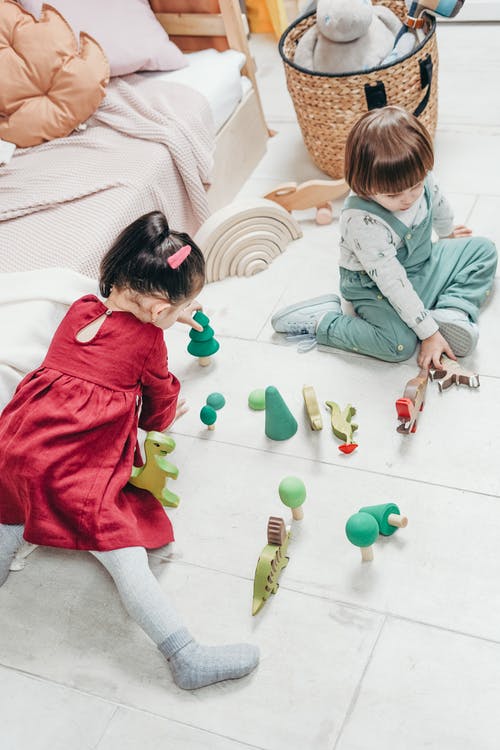
Back in 2017 I started to wonder about behavior of my older two children. They were well into elementary school by this time. And while I was trying my best to be a patient and positive role model for my kids, filling up their little cups with positive attention and special time, I still felt like things weren’t quite within my grasp — that something was just beyond what I felt like was “normal” behavior. My first breakthrough finally came in October 2019, when my middle guy was diagnosed with ADHD. And it wasn’t just the hyperactivity we were dealing with — he had the entire ADHD package: impulsivity, Oppositional Defiance Disorder (ODD), and General Anxiety/Depression Disorder (GAD). After several years, from preschool until the beginning of 5th grade, of trying to manage the barrage of screaming fits, belligerence, argumentativeness, overly rash behavior, and sadly over time, very real symptoms of depression, we finally had answers and help was on the way. It wasn’t long until our other children were also diagnosed with ADD/ADHD, but their symptoms nearly weren’t quite so severe. These diagnoses catapulted my journey of understanding my children’s behavior much more deeply and fully, something for which I’ve always been extremely grateful. I spent the next few years, between then and now, soaking up whatever literature and therapist blogs (!) I could find on ADHD so I could understand how their brains worked, and why they behave in the way they behave.
I write about this because parents of ADHD kids, especially the roughly 50% who also have ODD and GAD like my middle guy, often feel isolated and alone. I certainly did. I didn’t even want to admit it for a long time. I wanted to hide it! I felt like I failed in some way — that maybe I did something wrong while I was pregnant or even sometimes blamed the scary moment when he stopped breathing after he was born. But the truth is that this is simply how he is, and it’s my responsibility for bringing him up the best way I possibly can. While I was grateful we could get him medical help and regular behavioral therapy, I felt like I was the only parent in the world dealing with the full ADHD package. I’d often ask myself: “Why can’t he just act like a normal kid?” “Why won’t he be compliant like his siblings and friends?” “Why this, why that?” Well, the answer is that he’s just not wired that way. And while I was diligent about keeping up good communication with his teachers, which is vital to helping us to help him, I worried that his teachers didn’t understand him either. Even with his medication and regular therapy, he still got in trouble fairly frequently and just did some pretty “dumb stuff.” I feel like I’m always apologizing to them! I needed more understanding, more help.
If my first breakthrough moment was the diagnosis and medical and therapeutic treatment, my second would probably be all of the legitimate online help I sought and, mercifully, found, as mentioned above. If you’ve kept up with my blogs, you know that I follow positive parenting techniques, ways of teaching kids through encouragement, positive attention, role playing, etc. These certainly helped, but my frustration came from the fact that the authors I was reading, both parents and experts, were probably dealing with and studying neurotypical children, and so my original parenting books sometimes fell short in my lived experience. So I started doing more digging and found a particularly great resource: the ADDitude Magazine. This resource, in combination with my positive parenting resources, has proven invaluable. I get tips sent to my email inbox from ADDitude, Big Life Journal, and AHAparenting, so I have little tidbits of information, tips, encouragement, or advice that I can easily access everyday. These resources have helped to reinforce some of the parenting skills I have already developed, but, in the case of ADDitude Magazine, they have taught me about ADHD, and why my children, particularly my middle guy, act the way that they do. Another invaluable resource is my son’s and daughter’s respective therapists. I’ve also had several brief talks with their therapists about their experience with ADHD kids, what advice they may have, and, because I’m always digging around and reading (remember those therapist blogs I mentioned?), sometimes we discuss the latest research and techniques that are available. By understanding how my children’s brains work differently and understanding their behavior more fully, I can parent more effectively. I can get at underlying causes of behavior problems more efficiently. My kids and I can be open about our discussions on behavior and expectations. I also feel like my relationship is even deeper with my children. Am I perfect every time? No. But I’m sure to apologize, ask for forgiveness, and move on. My children are still the intelligent little people I’ve always known them to be, and to watch them shine through their struggles is such a reward for both of us! If your kids have ADD/ADHD don’t be afraid to get help and don’t lose hope! It’s easy to get discouraged (I can’t tell you how many times I’ve cried), but they will pull through. Give them the encouragement and positive attention they crave, line up your support system, and watch them (and yourself) shine!













